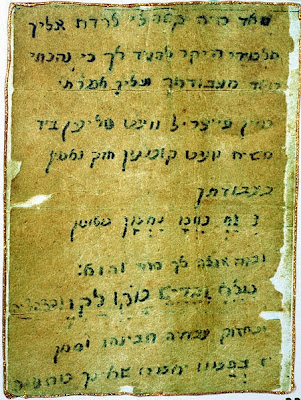Currado Malaspina's unlikely interest in Hebraic orthography is quite accidental. It began at Paris Sportif the posh central Paris health club where my friend Malaspina gallops on the elliptical with chubby government ministers and not a few former 'vedettes de cinema francais.'
While rifling through a pile of damp and salty smelling gym shorts in the lobby's perdus et trouvés (much to the consternation of the Police Nationale, the French have an unusual custom of placing a ragged lost and found box in conspicuous corners of a public buildings as if the nation were one big kindergarten classroom) he found what he thought was an innocent shopping list.
While rifling through a pile of damp and salty smelling gym shorts in the lobby's perdus et trouvés (much to the consternation of the Police Nationale, the French have an unusual custom of placing a ragged lost and found box in conspicuous corners of a public buildings as if the nation were one big kindergarten classroom) he found what he thought was an innocent shopping list.
In fact, thinking at first that it was Arabic, he showed the paper to the weight coach Yazid, a Berber from Mauretania by way of Madrid whose knowledge of Semitic languages was less than perfect.
"C'est amharique," he helpfully said, inflecting his voice with the swarthy authority of the whole of Africa. And with that he roughly translated the text as "two baguettes, 100 grams of sliced ham, four bottles of Côtes de Gascogne ...." etc. etc.
It wasn't till much later that Currado learned that his crumpled sheet of paper was a lovely little lycée exercise of rhyming Hebrew couplets describing the traditional fast day of Tu Bishvat.
By then Yazid's deception was of little import. Currado was irrevocably smitten by the naked graphic power of the flexed square lettering.
And this was the genesis of Palimpseste, Currado's great, enigmatic ouevre which has managed to simultaneously enrage la communauté Israelite and excite la communauté des collectionneurs.
Tant pis.







